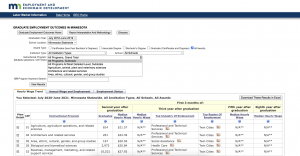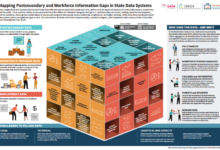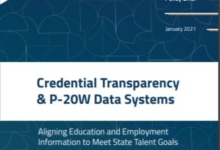
Retrieved from https://apps.deed.state.mn.us/lmi/etd/Results.aspx
In 2014, the Minnesota Department of Employment and Economic Development (DEED), in partnership with the Office of Higher Education, released the Graduate Employment Outcomes Tool to the public. The tool was funded primarily through a federal Workforce Data Quality Initiative grant and was designed to meet the growing demand from both policymakers and prospective students for more transparent data on employment outcomes for graduates.
The tool works by matching postsecondary student records with unemployment insurance data to provide wage and employment reports by institution and by program for individuals who graduated within the past few years. Learners can log in to the tool, search for a school or a program they are interested in pursuing, and quickly compare employment outcomes for different institutions. Importantly, data in the Graduate Employment Outcomes Tool can be disaggregated by race, allowing users to compare outcomes for students like them. To maximize awareness and use of the data, state officials at DEED and the Office of Higher Education reach out to counselors and other school-based leaders to teach them how to use the tool.
Minnesota goes beyond federal reporting requirements to provide disaggregated data on labor market outcomes for graduates of different institutions of higher education. This approach aims to demystify the postsecondary system by equipping students, families and school counselors with information to make informed decisions about their postsecondary options. Additionally, Minnesota demonstrates how policymakers can use employment outcomes data to identify workforce needs and build the case for expanding pathways into the workforce.
Policy in Action
Expanding opportunities for underserved racial populations is a critical need in Minnesota. In recent years, the population of people of color in Minnesota between the ages of 18 and 64 has increased while the population of white Minnesotans has decreased. The fate of the economy, therefore, depends on an inclusive, accessible workforce. Policymakers and researchers at DEED have used the Graduate Employment Outcomes Tool to unpack workforce trends and build the case for strengthening education and training pathways into the workforce. They argue that closing racial gaps “is not only the right thing to do, it’s the necessary thing to do if we’re to provide our economy and its employers with the workforce necessary for success.”
Related Links
Making Good on the Promise: Examining Access and Achievement Gaps
Last Updated June 2024






